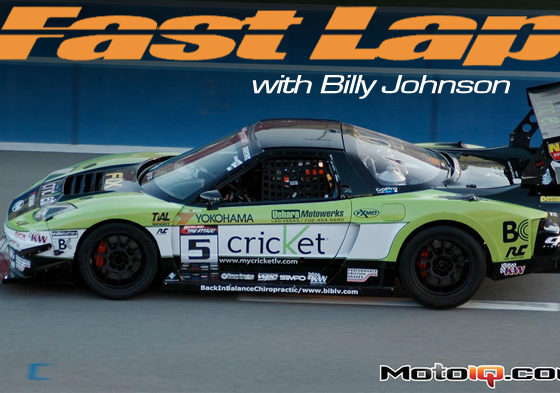,
 |
|
Some clutches have two diaphragm springs stacked on top of each other to greatly increase the clamping force. The rivets you see in this picture around the clutch cover hold the fulcrums for the diaphragm springs in place.
|
To prevent slipping, high performance pressure plates have stiffer diaphragm springs to give the higher clamp load. The more clamping force, the harder the pressure ring smashes the disc to the flywheel and the less likely anything will slip. Most aftermarket clutches have a thicker diaphragm spring or a stock spring that is re-stamped more conically for more preload and/or heat treated for more spring. Some extreme clutches even have a double diaphragm spring which is usually two stock springs stacked on top of each other. Beware of going too crazy with clamping force; some clutches have so much clamping force that they can cause excessive wear on your crankshaft thrust bearings. A general rule of thumb is do not increase the clamp load more than 50% over stock.
 |
|
Centerforce uses a ring of weights attached to the diaphragm spring fingers to cause an outward bending action at high rpm to force the clutch to clamp harder.
|
Some HD clutches have beefier, thicker pressure rings to resist warping with heavier clamp loads and high heat. Some HD clutches have a cover stamped of thicker gauge steel to hold up to increased clamping pressures of thicker diaphragm springs without flexing. This gives more consistent clutch action and improved clamping. Some pressure plates have a ring of weights on a cable attached to the fingers of the diaphragm spring. These weights are supposed to offer a centrifugal assist, increasing clamping pressure at high RPM. Although this is an innovative idea, care must be taken to avoid overcentering with this sort of device.
Overcentering is when the diaphragm spring’s fingers get pushed past the normal centerline of the diaphragm spring. When this occurs, centrifugal force acting on the weights and diaphragm spring keeps the fingers of the spring bent down causing the clutch to stay disengaged during high RPM shifts. This may cause your motor to overev or damage to the transmission. Overcentering can occur with any diaphragm clutch but centrifugal assisted clutches are especially sensitive to this. If you can feel the pedal get lighter with increasing revs, that is the clutch wanting to overcenter. All diaphragm-type clutches are prone to overcenter to some degree so you want to be sure that your clutch is adjusted for proper throw correctly.
Although the penalty for having a slip-resistant high clamp load clutch is a stiff, hard to drive clutch pedal, many heavy duty high performance clutches use some tricks to keep the clamp forces high but the pedal pressure low. The most common one is to increase the throwout bearings’ leverage ratio by moving the diaphragm springs fulcrum outboard so the throwout bearing has more leverage to bend the spring inward. This also makes the engagement slower which can help make slipping a grabby clutch off the line easier. Another trick is to use a smaller throwout bearing. Some clutches come with a clutch slave cylinder with a larger bore to reduce pedal effort. The only disadvantage to this is that it can slow clutch release by a few milliseconds and slow shifting somewhat.
 |
|
This Cusco Clutch from an EVO has a stiff but light machined alloy clutch cover and a pull type activation. This works better than a conventional push type pressure plate.
|
A less common type of pressure plate is called a pull type. Pull type pressure plates are found on cars like the EVO, STi, some Porsches and the R34 and older Skyline GT-R. Pull type pressure plates are also common on full race applications. A pull type pressure plate releases by pulling on the diaphragm spring instead of pushing it. The throwout bearing is attached to the inside of the diaphragm spring. Pull type pressure plates have a lighter pedal effort for a given clamp load and are more efficient in developing clamp force because the diaphragm spring’s fulcrum is at the outer edge of the cover and the outer diameter of the spring. Because the clamp load of the diaphragm spring is on the outer edge of the cover, there is less stress and thus less flex in the cover. With less flex a harder clamp load can be applied to the pressure ring. This reduction of flex makes a pull pressure plate have up to 30% more actual clamping force per pound of load that the spring makes over a conventional push type pressure plate. The pull pressure plate also has a much lighter pedal effort because the outboard fulcrum gives the release arm more leverage to flatten the spring and take load off of the pressure ring. Because the pull pressure plate’s cover is near the bolted down periphery it reduces bending load on the cover. As such, the cover can be both smaller and lighter in construction, thus reducing rotating weight. These features are the reason why many true racing clutches are pull type.
Now that you are familiar with the operation of the pressure plate, in our next installment, we will discuss the ins and outs of an even more complex subject, the clutch disc.
Stay tuned!
Sources
Nukabe Automotive
Cusco Clutches
www.napsusa.com
Jim Wolf Technology
Nissan Clutches
www.jimwolftechnology.com
Centerforce
www.centerforce.com
Clutch Net
www.clutchnet.com
Clutch Masters
www.clutchmasters.com
Exedy
www.daikin-clutch.com
Fidanza
www.fidanza.com
Unorthodox Racing
www.unorthodoxracing.com




1 comment
Do you stock Heavy duty pressure plate for a e46 330d m57 D1
2002 model
High clamp force